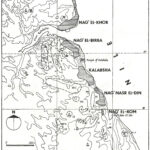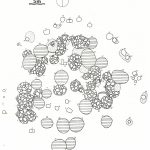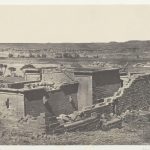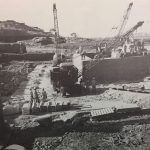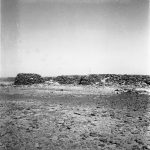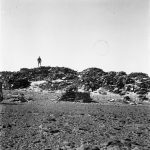KALĀBŠA (TALMIS)
| Egyptian | Tlms | Tȝ-ȝms | Tȝ-ȝnms | Trms |
| Greek | Ταλμις |
| Coptic | talmis |
| Arabic | كلابشة |
| English | Kalabsha | Talmis |
| French | Kalabcha | Kalabchah | Kalabcheh | Kalabscha | Kalabsche | Kalabsha |
| DEChriM ID | 78 |
| Trismegistos GeoID | 2787 |
| Pleiades ID | 795868 | PAThs ID | 422 |
| Ancient name | Talmis |
| Modern name | Kalābša |
| Latitude | 23.558317 |
| Longitude | 32.757473 |
| Date from | -88 |
| Date to | 600 |
| Typology | Town |
| Dating criteria | Literary sources, ceramicware, coinage, 14C. |
| Description | The site of Kalābša, ancient Talmis, was situated on the west bank of the Nile, c. 60-62km south of Aswān, c. 35km south-east of Wādī Qiṭna. It was "the main urban centre in the Dodekaschoinos" (Obłuski 2014: 31). The site had contained a temple dedicated to the Nubian god Mandulis constructed under Ptolemy IX Soter II between 88 and 80BCE, which was since dismantled and moved just south of the Aswan High Dama, and a fortified village dated to the Nobadian and Makurian periods (Obłuski 2014: 106-107). The main area of interest, however, is the cemetery of Kalābša, which comprised several hundred funerary tumuli, thought to contain as many as 1000-1500 individuals (Strouhal 2020: 33). Within tumulus K20/71 (Group 2) of the southerly section of the cemetery, denoted Kalābša South, was found an LRA1 vessel with three Greek texts which have enabled the site to be associated with fourth century Christianity (see: artefact 1375 / TM 105026) (Strouhal 1984: 77, 156). The only architectural indication of the faith at the site, though presumably of a later date, is the church which had been erected within the confines of the temple (Weigall 1907: 68-73). Alongside the cemetery of Wādī Qiṭna, the Kalābša South cemetery has been dated between the second half of the third century and the end of the fifth century, largely thanks to ceramic (Strouhal 1984: 101-194, 265; id 2020: 43), but also with the aid of 14C dating and numismatic evidence (Strouhal 1984a: 230, 241 and table 44). This dating is, indeed, in agreement with historical written sources. According to Epiphanius of Salamis (Gemm. 19-21), Talmis was conquered by the Blemmyes right before 394 (Obłuski 2014: 27, 35). In the following century, the political situation seems to remain the same since, around 423, Olympiodoros (Hist. fragm. I 37) includes Talmis in the Blemmyan Kingdom (Obłuski 2014: 27). It is, for instance, to this period that date the inscriptions of the Blemmyan and Nubian leaders Kharamandoye, Tamal, Isemne and Silko (Obłuski 2014: 27-28, 34-36). The fate of Kalābša after this period is uncertain. We only know that, in the sixth century, Talmis was the seat of an exarch (Obłuski 2014: 96, 100, 103). According to Artur Obłuski, the site might well have functioned "long into the Makurian period (8th-13th centuries)" (personal communication). |
| Archaeological research | The tumuli of Kalābša were mentioned for the first time by A. E. P. Weigall, and the first survey was conducted by C. M. Firth (Weigall 1907: 75-76, pl. 27; Firth 1912: 36-37). Later, limited research was conducted by W. B. Emery as part of work associated with the sites of Ballāna and Qusṭul, which included publication of a cross-section of one of the tumuli and a repertoire of typical ceramic (Emery 1938: 20, figs. 4-5). Majority of the archaeological work conducted in Kalābša was part of the UNESCO campaign to safeguard the monuments of Nubia, and, as such, was only brief. The earliest work, conducted in 1956, was dedicated to architectural and epigraphic recording of the site’s temple (Daumas and Christophe 1959: 33, 44-45, 52; id 1960: 50). During the summer of 1959, the local antiquities inspectorate began excavating at the site, revealing the roofs of two chapels, with the continuation of work the following year resulting in the unearthing of a late period tomb (Or 30, 1961: 191; Or 31: 208). In 1961-1962, the temple of Mandulis was dismantled by a German team and rebuilt in 1962-1963 at a new site close to the Aswan High Dam (Wright 1976; id 1977). In 1974, as thanks for the assistance in the movement of the monument, the Egyptian government granted Germany the monumental gate of the temple, which now exists in the Charlottenburg park in Berlin. In the process of dismantling this temple, blocks from another, Ptolemaic-period temple were found, which were subsequently transferred to Ǧazīrat Aswān (Elephantinē), where the structure was partially rebuilt between 1974 and 1975 (Wright 1977; id 1987). In 1960-1961, cemeteries A and B in the north, C in the south, and E to the north of Bāb Kalābša were excavated during a single campaign by the Oriental Institute Nubian Expedition, a joint mission between the University of Chicago and the Schweizerisches Institut für Ägyptische Bauforschung und Altertumskunde in Kairo (Ricke 1967: 37-42). And in 1965, Kalābša South, the area of relevance for the only demonstrably fourth century Christian object, was excavated by the Czechoslovak Institute of Egyptology, Charles University (Prague and Cairo), directed by Z. Žába with assistance by E. Strouhal. The efforts of the Czech team had been dedicated largely to Wādī Qiṭna (April 2nd-May 21st), with only three days dedicated to Kalābša (May 8th-10th) (Strouhal 1984: 74-75). The site has since been submerged with the flooding of the Aswan High Dam. |
• Curto, S. 1967. “Surintendence égyptologie de Turin. Mission archéologique.” In Fouilles en Nubie 1961-1963. Campagne internationale de l’UNESCO pour la sauvegarde des monuments de la Nubie, p. 35-39, pl. II. Ministère de la culture et de l’orientation nationale: Service des antiquités de l’Égypte.
• Daumas, Fr. 1970. La Ouabet de Kalabcha. Cairo: Centre de documentation et d’études sur l’ancienne Égypte.
• Firth, C. M. The Archaeological Survey of Nubia, Report for 1908-1909. Cairo: National Printing Office.
• Gauthier, H. 1911. Les temples immergés de la Nubie. Le temple de Kalabchah. Cairo: Institut français d’archéologie orientale.
• de Meulenaere, H., M. Dewachter, and M. Aly. 1964-1970. La chapelle ptolémaïque de Kalabcha. Cairo: Centre de documentation et d’études sur l’ancienne Égypte.
• Obłuski, A. 2014. The Rise of Nobadia. Social Changes in Northern Nubia in Late Antiquity. Warsaw: University of Warsaw.
• Røder, G. 1911. Les temples immergés de la Nubie. Debod bis Bab Kalabsche. Cairo: Institut français d’archéologie orientale.
• Ricke, H. 1967. Ausgrabungen von Khor-Dehmit bis Bet al-Wali. Joint Expedition 1960/1961 with the Schweizerisches Institut für Ägyptische Bauforschung und Altertumskunde in Kairo and the University of Chicago. Chicago: University of Chicago Press.
• Siegler, K. G. and U. Rombock. 1970. Kalabsha: Architektur und Baugeschichte des Tempels. Berlin: Mann.
• Stock, H., and K. G. Siegler. 1965. Kalabsha. Der grösste Tempel Nubiens und das Abenteuer seiner Rettung. Weisbaden: F. A. Brockhaus
• Strouhal, E. 1979. “Contribution to Archaeology and Anthropology of Egyptian Nubia in 4th-6th century A.D.” In Acts of the First International Congress of Egyptology, Cairo, 1976, edited by W. F. Reinecke, 609-613. Berlin: Akademie Verlag.
• Strouhal, E. 1982 “Hand-Made Pottery of the IV-VI Centuries A.D. Dodecaschoinos.” In Nubian Studies. Proceedings of the Symposium for Nubian Studies, 215-222. Warminster: Aris and Phillips.
• Strouhal, E. 1984. Wadi Qitna and Kalabsha-South. Late Roman – Early Byzantine Tumuli Cemeteries in Egyptian Nubia. Vol. I. Archaeology. Prague: Charles University.
• Strouhal, E. 2020. Wadi Qitna and Kalabsha-South. Late Roman – Early Byzantine Tumuli Cemeteries in Egyptian Nubia. Vol II. Anthropology. Prague: Charles University.
• Then-Obłuska, J. 2016. “Beads and Pendants from the Tumuli Cemeteries at Wadi Kitna and Kalabsha-South, Nubia.” BEADS: Journal of the Society of Bead Researchers 28: 38-49.
• Weigall, A. E. P. 1907. A Report on the Antiquities of Lower Nubia and their Condition 1906-7. Oxford: Oxford University Press.
• Winter, E. 1977. “Das Kalabsha-Tor in Berlin.” Jahrbuch Preussischer Kulturbesitz 14: 59-71, figs. 9-13.
• Wright, G. R. H. 1972. Kalabsha. The Preserving of the Temple. Berlin: Mann.
• Wright, G. R. 1976. “Kalabsha Temple Revisited (1961-1976). The West German Government’s Preservation of a Nubien Monument.” Mitteilungen des deutschen archäologischen Institut Kairo 32: 227-232, fig. 1 and pls. 54-55.
• Wright, G. R. H. 1977. “Ptolemaic Remains from Kalabsha Tempe Reconstituted on Elephantine Island (1974-1975).” Journal of Egyptian Archaeology 63: 156-158.
• Wright, G. R. H. 1987. Kalabsha III. The Ptolemaic Sanctuary of Kalabsha. Its Reconstruction on Elephantine Island. Cairo: Deutsches Archäologisches Institut.


 Json data
Json data